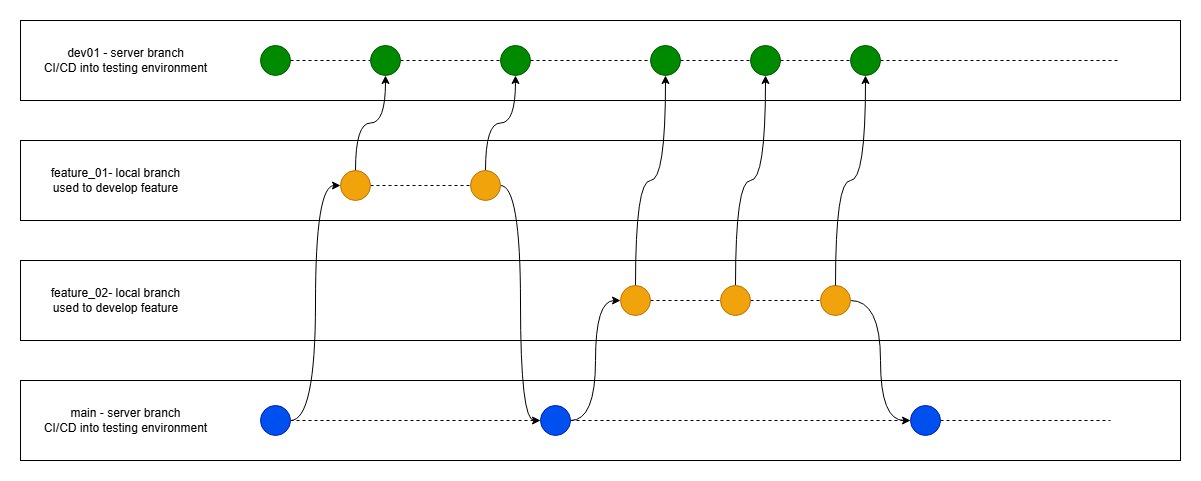When and Where to Use Inheritance in Python
Introduction Inheritance is one of the most powerful features of Object-Oriented Programming (OOP), allowing developers to create a hierarchical relationship between classes, promote code reuse, and follow the DRY (Don't Repeat Yourself) principle. However, as powerful as inheritance is, it’s not always the right tool for the job. Misusing inheritance can lead to complex, hard-to-maintain code. In this article, we’ll explore when and where you should use inheritance in Python, helping you make informed decisions in your software design. Understanding the Purpose of Inheritance Before diving into when and where to use inheritance, it’s important to understand its primary purposes: Code Reuse: Inheritance allows you to reuse existing code by extending or modifying it in a new class, saving you from writing redundant code. Hierarchical Relationships: Inheritance helps to model real-world relationships where one class is a specialized version of another, such as a Dog class inheriting from an Animal class. Polymorphism: Inheritance enables polymorphism, where different classes can be treated as instances of the same base class, allowing for more flexible and reusable code. When to Use Inheritance When There is a True "Is-a" Relationship Inheritance is best used when there is a clear "is-a" relationship between the parent and child classes. For example, if you have an Animal class and a Dog class, it makes sense to use inheritance because a dog is a type of animal. class Animal: def __init__(self, name): self.name = name def speak(self): return f"{self.name} makes a sound." class Dog(Animal): def speak(self): return f"{self.name} barks." dog = Dog("Buddy") print(dog.speak()) # Output: Buddy barks. In this example, Dog inherits from Animal because a dog is indeed an animal. This kind of relationship is a strong indicator that inheritance is the right tool to use. When You Need to Extend or Customize Existing Functionality Another good use case for inheritance is when you want to extend or customize the behavior of an existing class. This allows you to build upon a well-defined base class without modifying its original code, which can be particularly useful when working with external libraries. class Button: def __init__(self, label): self.label = label def click(self): print(f"{self.label} clicked!") class ImageButton(Button): def __init__(self, label, image_path): super().__init__(label) self.image_path = image_path def click(self): print(f"Image button {self.label} clicked, displaying {self.image_path}") img_button = ImageButton("Submit", "/images/submit.png") img_button.click() # Output: Image button Submit clicked, displaying /images/submit.png Here, ImageButton extends Button, adding new functionality while retaining the base functionality of the Button class. When Implementing Polymorphism Polymorphism allows different classes to be treated as instances of the same class through a shared interface, typically provided by a base class. This is useful when you want to write code that can work with objects of different types in a uniform way. class Animal: def speak(self): raise NotImplementedError("Subclasses must implement this method") class Dog(Animal): def speak(self): return "Bark!" class Cat(Animal): def speak(self): return "Meow!" animals = [Dog(), Cat()] for animal in animals: print(animal.speak()) # Output: # Bark! # Meow! In this example, both Dog and Cat inherit from Animal and implement the speak() method. The code that works with the Animal class can interact with any subclass, making the code more flexible and reusable. When Not to Use Inheritance 1. When There is No True "Is-a" Relationship If there’s no clear "is-a" relationship between the classes, using inheritance can lead to confusion and tightly coupled code. For example, it wouldn’t make sense for a Car class to inherit from a Wheel class, because a car is not a wheel. 2. When You Only Need to Share Functionality If your goal is to share common functionality between classes, but there’s no strong "is-a" relationship, consider using composition over inheritance. Composition involves including instances of other classes as attributes, allowing you to reuse code without creating unnecessary inheritance hierarchies. class Engine: def start(self): print("Engine started.") class Car: def __init__(self, make, model): self.make = make self.model = model self.engine = Engine() # Composition: Car has an Engine def start(self): self.engine.start() print(f"{self.make} {self.model} is ready to go!") car = Car("Toyota", "Corolla") car.start() # Output: # Engine started. # Toyota Corolla is ready to go! In this example, Car includes an Engine as a componen

Introduction
Inheritance is one of the most powerful features of Object-Oriented Programming (OOP), allowing developers to create a hierarchical relationship between classes, promote code reuse, and follow the DRY (Don't Repeat Yourself) principle. However, as powerful as inheritance is, it’s not always the right tool for the job. Misusing inheritance can lead to complex, hard-to-maintain code. In this article, we’ll explore when and where you should use inheritance in Python, helping you make informed decisions in your software design.
Understanding the Purpose of Inheritance
Before diving into when and where to use inheritance, it’s important to understand its primary purposes:
Code Reuse: Inheritance allows you to reuse existing code by extending or modifying it in a new class, saving you from writing redundant code.
Hierarchical Relationships: Inheritance helps to model real-world relationships where one class is a specialized version of another, such as a Dog class inheriting from an Animal class.
Polymorphism: Inheritance enables polymorphism, where different classes can be treated as instances of the same base class, allowing for more flexible and reusable code.
When to Use Inheritance
- When There is a True "Is-a" Relationship Inheritance is best used when there is a clear "is-a" relationship between the parent and child classes. For example, if you have an Animal class and a Dog class, it makes sense to use inheritance because a dog is a type of animal.
class Animal:
def __init__(self, name):
self.name = name
def speak(self):
return f"{self.name} makes a sound."
class Dog(Animal):
def speak(self):
return f"{self.name} barks."
dog = Dog("Buddy")
print(dog.speak()) # Output: Buddy barks.
In this example, Dog inherits from Animal because a dog is indeed an animal. This kind of relationship is a strong indicator that inheritance is the right tool to use.
- When You Need to Extend or Customize Existing Functionality Another good use case for inheritance is when you want to extend or customize the behavior of an existing class. This allows you to build upon a well-defined base class without modifying its original code, which can be particularly useful when working with external libraries.
class Button:
def __init__(self, label):
self.label = label
def click(self):
print(f"{self.label} clicked!")
class ImageButton(Button):
def __init__(self, label, image_path):
super().__init__(label)
self.image_path = image_path
def click(self):
print(f"Image button {self.label} clicked, displaying {self.image_path}")
img_button = ImageButton("Submit", "/images/submit.png")
img_button.click() # Output: Image button Submit clicked, displaying /images/submit.png
Here, ImageButton extends Button, adding new functionality while retaining the base functionality of the Button class.
- When Implementing Polymorphism Polymorphism allows different classes to be treated as instances of the same class through a shared interface, typically provided by a base class. This is useful when you want to write code that can work with objects of different types in a uniform way.
class Animal:
def speak(self):
raise NotImplementedError("Subclasses must implement this method")
class Dog(Animal):
def speak(self):
return "Bark!"
class Cat(Animal):
def speak(self):
return "Meow!"
animals = [Dog(), Cat()]
for animal in animals:
print(animal.speak())
# Output:
# Bark!
# Meow!
In this example, both Dog and Cat inherit from Animal and implement the speak() method. The code that works with the Animal class can interact with any subclass, making the code more flexible and reusable.
When Not to Use Inheritance
1. When There is No True "Is-a" Relationship
If there’s no clear "is-a" relationship between the classes, using inheritance can lead to confusion and tightly coupled code. For example, it wouldn’t make sense for a Car class to inherit from a Wheel class, because a car is not a wheel.
2. When You Only Need to Share Functionality
If your goal is to share common functionality between classes, but there’s no strong "is-a" relationship, consider using composition over inheritance. Composition involves including instances of other classes as attributes, allowing you to reuse code without creating unnecessary inheritance hierarchies.
class Engine:
def start(self):
print("Engine started.")
class Car:
def __init__(self, make, model):
self.make = make
self.model = model
self.engine = Engine() # Composition: Car has an Engine
def start(self):
self.engine.start()
print(f"{self.make} {self.model} is ready to go!")
car = Car("Toyota", "Corolla")
car.start()
# Output:
# Engine started.
# Toyota Corolla is ready to go!
In this example, Car includes an Engine as a component rather than inheriting from it, which makes more sense logically and keeps the code flexible.
3. When It Leads to a Complex Inheritance Tree
Deep or complex inheritance trees can be difficult to maintain and understand. If your class hierarchy is becoming too complex, it might be a sign that inheritance isn’t the best solution. Consider simplifying your design or using other patterns like interfaces or mixins to achieve the desired functionality.
Conclusion
Inheritance is a powerful feature of Object-Oriented Programming, but it should be used thoughtfully. It’s most appropriate when there’s a clear "is-a" relationship between classes, when you want to extend existing functionality, or when implementing polymorphism. However, if you’re simply looking to share functionality, or if inheritance leads to complex and confusing code structures, consider using composition or other design patterns instead.
By carefully considering when and where to use inheritance, you can create cleaner, more maintainable code that effectively models the relationships in your domain. Remember, the goal is to make your code as intuitive and straightforward as possible, and inheritance is just one tool in your toolbox to help achieve that.






































































































































































![[The AI Show Episode 145]: OpenAI Releases o3 and o4-mini, AI Is Causing “Quiet Layoffs,” Executive Order on Youth AI Education & GPT-4o’s Controversial Update](https://www.marketingaiinstitute.com/hubfs/ep%20145%20cover.png)



























































































































![[DEALS] Microsoft 365: 1-Year Subscription (Family/Up to 6 Users) (23% off) & Other Deals Up To 98% Off – Offers End Soon!](https://www.javacodegeeks.com/wp-content/uploads/2012/12/jcg-logo.jpg)




![From Art School Drop-out to Microsoft Engineer with Shashi Lo [Podcast #170]](https://cdn.hashnode.com/res/hashnode/image/upload/v1746203291209/439bf16b-c820-4fe8-b69e-94d80533b2df.png?#)








































































































(1).jpg?#)
































_Inge_Johnsson-Alamy.jpg?width=1280&auto=webp&quality=80&disable=upscale#)














































































































![Apple to Split iPhone Launches Across Fall and Spring in Major Shakeup [Report]](https://www.iclarified.com/images/news/97211/97211/97211-640.jpg)
![Apple to Move Camera to Top Left, Hide Face ID Under Display in iPhone 18 Pro Redesign [Report]](https://www.iclarified.com/images/news/97212/97212/97212-640.jpg)
![Apple Developing Battery Case for iPhone 17 Air Amid Battery Life Concerns [Report]](https://www.iclarified.com/images/news/97208/97208/97208-640.jpg)
![AirPods 4 On Sale for $99 [Lowest Price Ever]](https://www.iclarified.com/images/news/97206/97206/97206-640.jpg)

































![[Updated] Samsung’s 65-inch 4K Smart TV Just Crashed to $299 — That’s Cheaper Than an iPad](https://www.androidheadlines.com/wp-content/uploads/2025/05/samsung-du7200.jpg)


































































